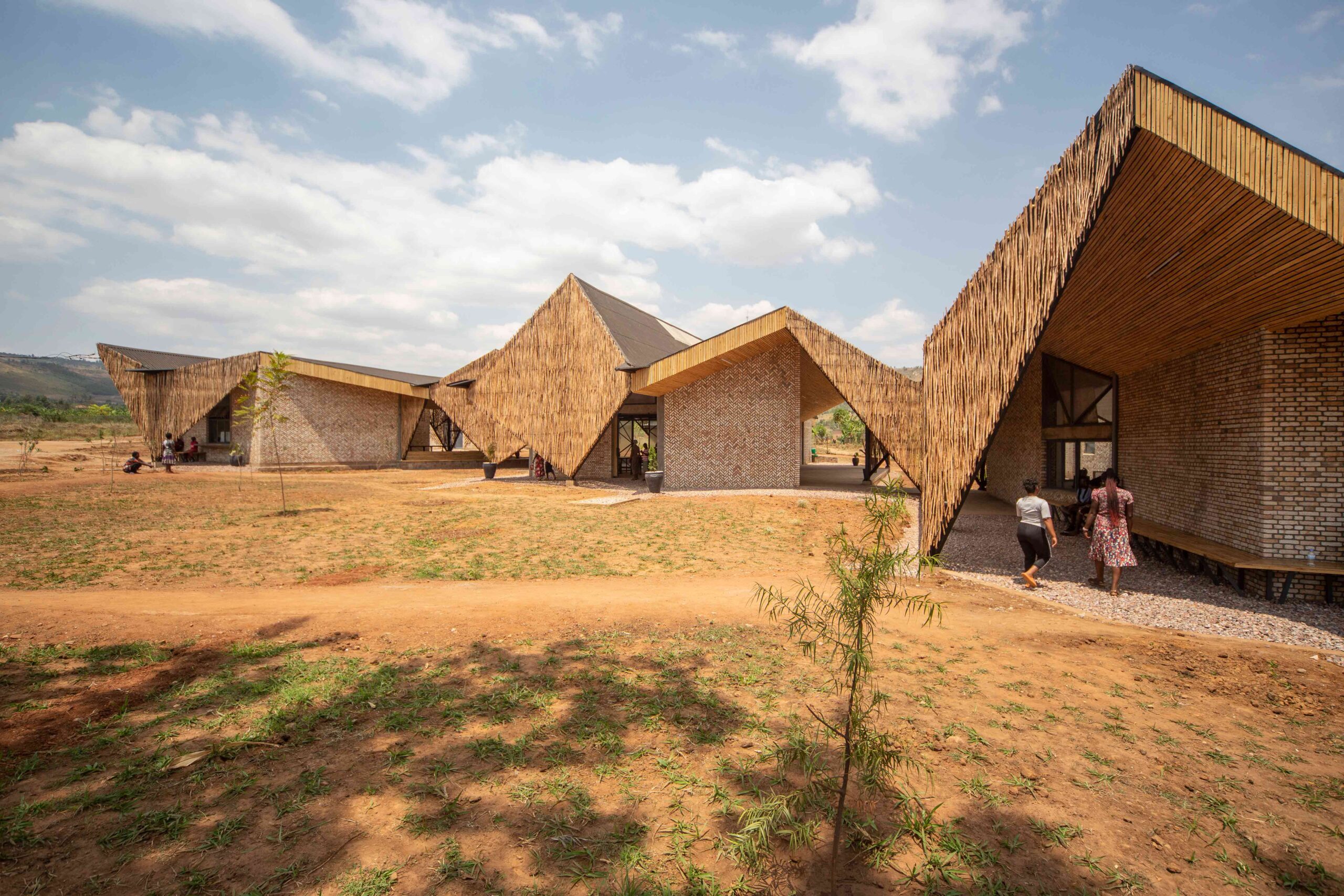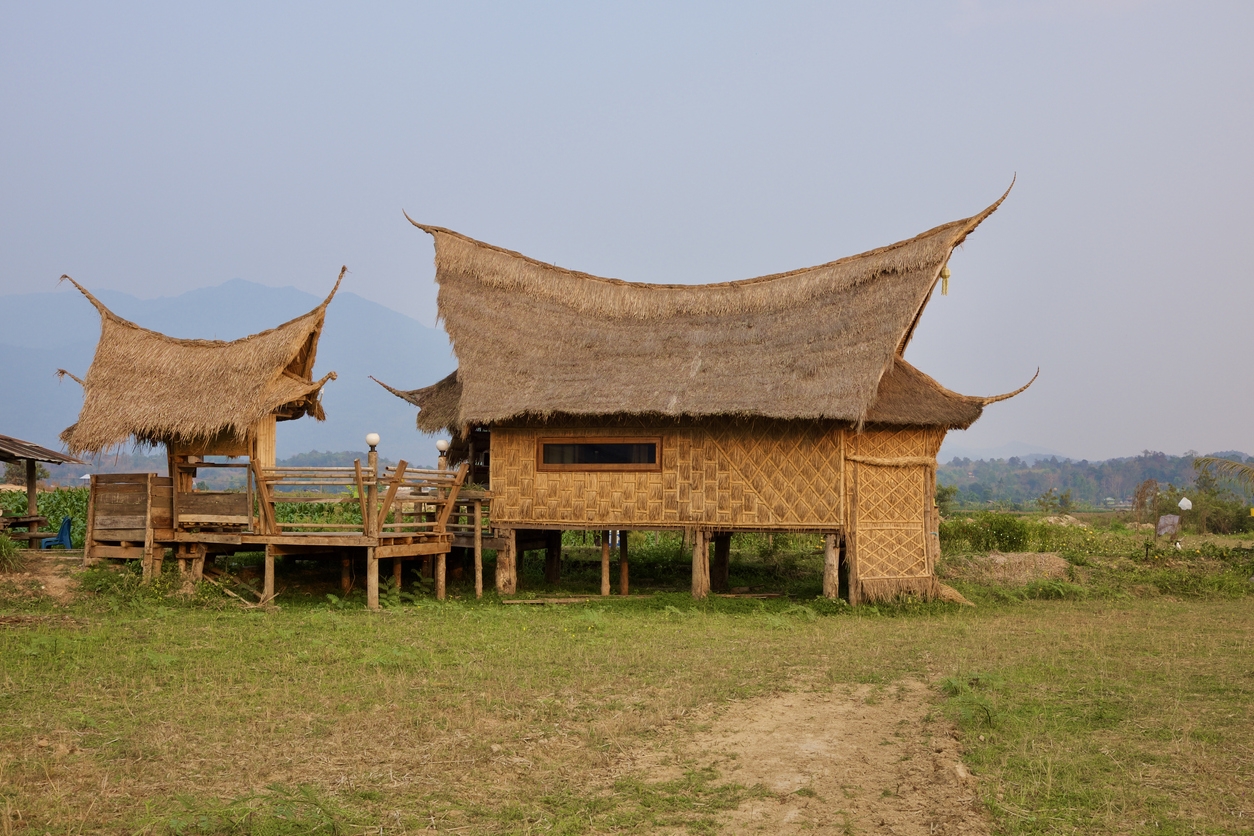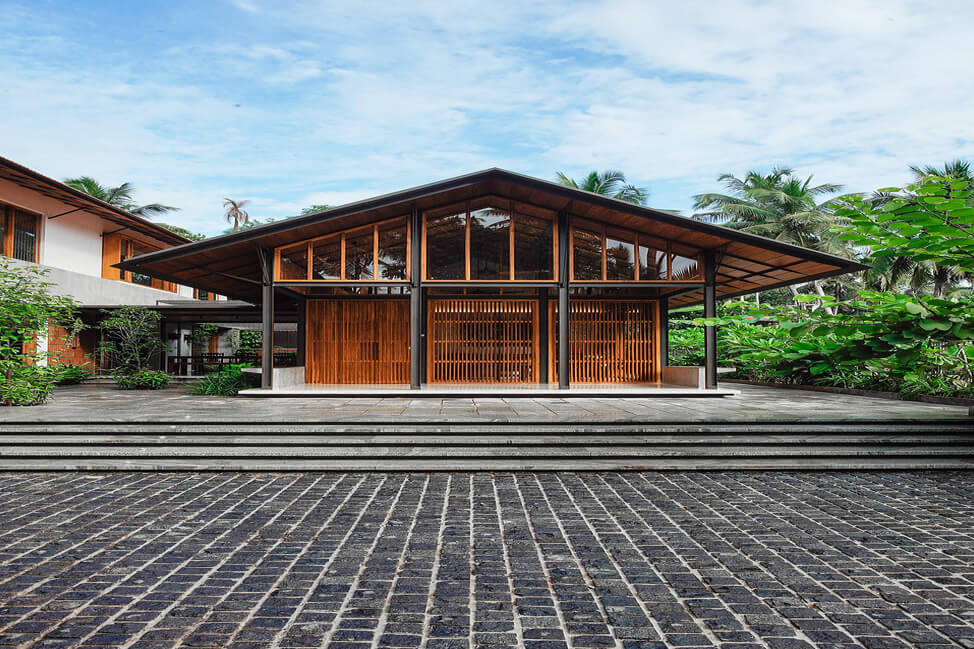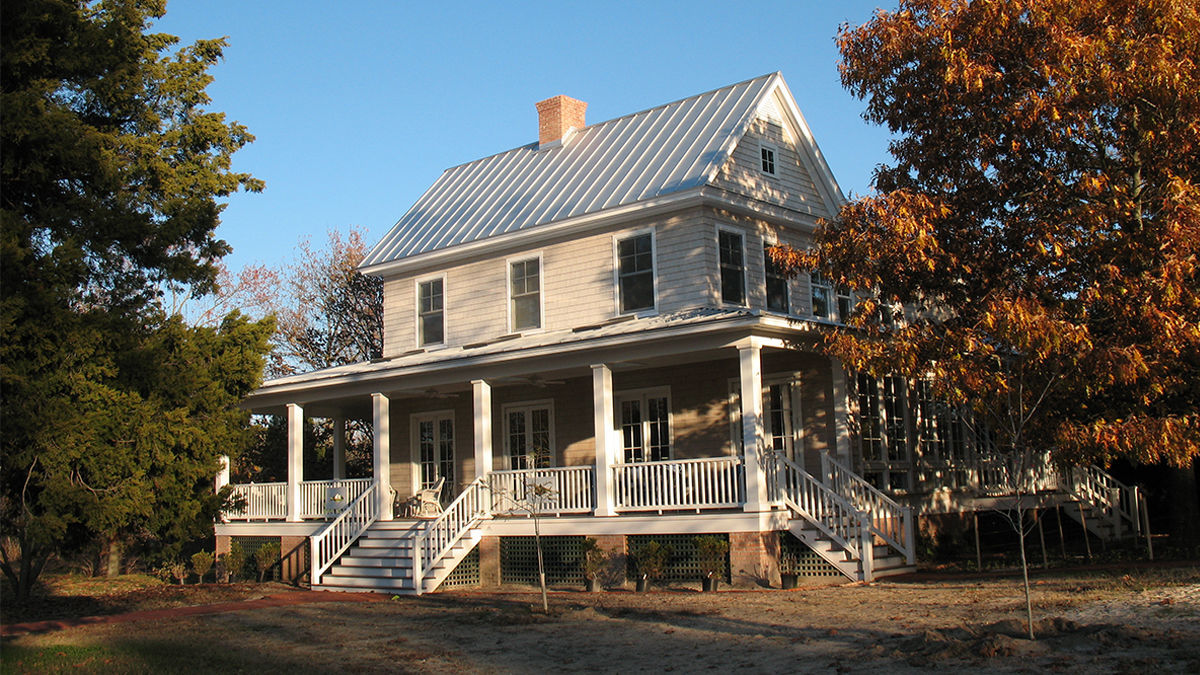Guide On Vernacular Architecture
Vernacular architecture, often overlooked in the bustling world of contemporary design, represents a profound connection between people and their environment. Rooted in tradition, shaped by climate, culture, and available resources, vernacular architecture is a testament to the ingenuity and adaptability of communities across the globe. In this exploration, we delve into the essence of vernacular architecture, uncovering its significance, diverse forms, and enduring relevance.
George EvansFeb 11, 20241621 Shares22828 Views

Vernacular architecture, often overlooked in the bustling world of contemporary design, represents a profound connection between people and their environment. Rooted in tradition, shaped by climate, culture, and available resources, vernacular architecture is a testament to the ingenuity and adaptability of communities across the globe. In this exploration, we delve into the essence of vernacular architecture, uncovering its significance, diverse forms, and enduring relevance.
Definition And Origins
Defining Vernacular Architecture
Vernacular architecture is a dynamic expression of communal ingenuity, encapsulating the construction practices that local communities organically develop to cater to their distinctive needs and adapt to the prevailing environmental conditions. It stands apart from formal architectural styles, as it emerges collaboratively from the collective wisdom and experience of the community, rather than being imposed by professional architects.
Historical Roots
The roots of vernacular architecture reach deep into the annals of history, spanning centuries of human civilization. Each geographic region cultivates its own distinctive style, weaving a narrative that intertwines with the unique characteristics of the local environment.
Whether manifesting as the adobe dwellings of the arid American Southwest, the elevated stilt houses harmonizing with waterways in Southeast Asia, or the enduring stone houses nestled along the Mediterranean coast, vernacular architecture serves as a testament to the intertwined relationships between history, lifestyle, and climate within a specific locale.
Adaptation To Climate
One of the hallmarks of vernacular architecture lies in its adeptness at adapting to diverse climates. Structures are crafted not merely as shelters but as harmonious responses to the climate's nuances. For instance, the adobe construction in the American Southwest showcases the efficacy of sun-dried mud bricks in regulating indoor temperatures, providing a template for sustainable living in arid regions.
Cultural Narratives In Design
Beyond pragmatic considerations, vernacular architecture is a storyteller. Each architectural element, from the choice of materials to the arrangement of spaces, carries cultural narratives. The stilt houses of Southeast Asia, with their elevation designed to combat floods and promote ventilation, not only speak to environmental acumen but also reflect the cultural values of resilience and adaptability ingrained in the community.
Symbiosis With Nature
Vernacular architecture is deeply entwined with nature. The stone houses of the Mediterranean, for instance, employ local materials that not only endure but also seamlessly blend with the surrounding landscape. This symbiosis with nature not only enhances the aesthetic appeal of the structures but also underscores the sustainable practices embedded in vernacular design.
Influences On Vernacular Architecture
Vernacular architecture, with its diverse and context-specific nature, is profoundly shaped by a multitude of influences, reflecting the intricate dance between human behavior and the environment. Even within seemingly similar regions, the subtle variations in construction and usage of dwellings underscore the nuanced impact of different factors on vernacular design.
Human Behavior And Regional Diversity
Distinct Approaches In Neighboring Villages
Neighboring villages, despite geographical proximity, often exhibit nuanced differences in their approaches to construction and dwelling usage. This diversity arises from a culmination of cultural practices, traditions, and the unique needs of each community. While superficially appearing similar, a closer inspection reveals the distinct fingerprints of local influences shaping the vernacular architectural identity.
Cultural Evolution And Adaptation
Vernacular architecture is a living testament to the cultural evolution and adaptation of communities. As societies change over time, so too does their architecture. Buildings evolve not only in response to immediate needs but also as a reflection of the collective memory and identity of the inhabitants.
Environmental Determinants
Macro Climate As A Dominant Force
The macro climate of a specific region plays a pivotal role in dictating the form and function of vernacular structures. In cold climates, buildings prioritize high thermal mass and insulation to combat heat loss. Sealed constructions with small or non-existent openings become prevalent. Conversely, warm climates see the use of lighter materials and a design that encourages cross-ventilation, with larger openings promoting airflow.
Adaptations To Precipitation And Wind
Continental climates demand buildings capable of coping with significant temperature variations, and occupants may alter structures according to the seasons. Precipitation levels heavily influence architectural choices, leading to stilts in flood-prone areas and specialized designs in windy regions. Buildings become dynamic entities, responding to the ebb and flow of environmental factors.
Micro Climate Influence
Within regions, micro climates also leave their mark on vernacular architecture. Mediterranean and Middle Eastern vernacular often incorporates courtyards with fountains or ponds. This design not only provides a cooling effect through water mist and evaporation but also enhances natural ventilation, showcasing the intricate ways in which climatic influences shape architectural forms.
Structural Similarities Amidst Diversity
Despite the vast array of influences, every vernacular building is bound by the universal laws of physics. Structural forms may vary significantly based on cultural and environmental factors, but inherent similarities emerge when examining the fundamental principles of load-bearing, stability, and resistance.
Vernacular Architecture - Preserving Cultural Identity In A Fragmented World
Beyond Sustainability - Cultural Identity And Sense Of Belonging
Vernacular architecture transcends its role as a sustainable building practice; it becomes a poignant tool for safeguarding and celebrating the cultural identity of distinct ethnic groups. In a world marked by rapid cultural transformations, the architectural heritage of a community stands as a crucial anchor, fostering a profound connection between its inhabitants and the geographical space they call home.
Cultural Identity As A Pillar
At its core, vernacular architecture serves as a tangible expression of cultural identity. The distinctive architectural styles, building materials, and construction methods reflect the traditions, values, and historical narratives of a specific ethnic group. In this way, vernacular structures become more than mere shelters; they are living artifacts that encapsulate the essence of a community's identity.
Fostering A Sense Of Belonging
As societies grapple with the challenges of globalization and cultural shifts, the role of vernacular architecture becomes paramount in fostering a sense of belonging. The architectural landscape becomes a shared canvas, where individuals see themselves as integral parts of a larger cultural narrative. This sense of belonging is crucial in counteracting the potential fragmentation of the individual within the evolving cultural systems of the modern world.
Tackling Fragmentation
In a thought-provoking interview with the Angolan architecture firm, Grupo BANGA, architects shed light on the profound impact of using local, affordable materials in vernacular architecture. According to Grupo BANGA, these materials establish a direct connection to architectural identity, simultaneously fostering inclusion, identification, and community engagement.
Local, Cheap, And Accessible Materials
The architects emphasize the importance of employing materials that are not only indigenous but also economically viable. The use of such materials ensures that the architectural choices resonate with the local context, becoming an integral part of the cultural tapestry. This deliberate selection of materials goes beyond mere practicality; it becomes a deliberate choice to strengthen the ties between the architectural form and the cultural identity it represents.
Inclusion And Community Engagement
Grupo BANGA's perspective underscores that vernacular architecture is not merely a passive reflection of cultural identity but an active participant in community life. By using materials that are accessible to the local population, vernacular structures invite active participation in the building process, creating a sense of ownership and shared responsibility. This inclusivity, in turn, contributes to a stronger sense of community engagement.
Vernacular Architecture Defined - Respecting Context And Heritage
Vernacular architecture, as articulated by Grupo BANGA, emerges as an architecture deeply attuned to the physical and technological limitations of its context. It is not a mere replication of historical forms but a dynamic response to the evolving needs of a community. Raised organically from its environment, people, and history, vernacular architecture becomes a genuine expression of a living, breathing cultural heritage.
Adaptation To Physical And Technological Limitations
The true essence of vernacular architecture lies in its ability to adapt. It is a responsive architecture that respects the constraints of its physical environment and embraces the technological limitations of its time. In doing so, it transcends the boundaries of a static past and becomes a contemporary reflection of a community's evolving needs.
Result Of Environment, People, And History
Vernacular architecture is not a standalone entity but a result of a symbiotic relationship between the environment, its people, and their history. It draws inspiration from the natural surroundings, incorporates the wisdom of generations, and weaves a narrative that evolves alongside the community it serves. In this way, vernacular architecture becomes an ever-evolving testimony to the resilience and continuity of cultural heritage.
Contemporary Inspirations And Future Prospects Of Vernacular Architecture
Influence On Contemporary Architecture
Adaptability, Sustainability, And Cultural Sensitivity
Vernacular architecture, with its rich tapestry of adaptability, sustainability, and cultural sensitivity, stands as an enduring muse for contemporary architects globally. In an age where the built environment faces unprecedented challenges, the timeless principles embedded in vernacular design emerge as valuable guideposts for those striving to create resilient and harmonious structures.
Adaptability In Design
Contemporary architects draw inspiration from the adaptability showcased in vernacular designs. The ability of vernacular structures to seamlessly integrate with the natural environment and respond to specific local needs becomes a blueprint for modern designs seeking to navigate complex urban landscapes and diverse climates.
Sustainability As A Guiding Principle
The sustainability embedded in vernacular architecture resonates strongly in an era dominated by environmental consciousness. The use of local materials, energy-efficient designs, and low-impact construction methods inherent in vernacular practices serves as a beacon for architects committed to reducing the ecological footprint of the built environment.
Cultural Sensitivity In A Global Context
As the world becomes increasingly interconnected, cultural sensitivity becomes a paramount consideration in architecture. Vernacular architecture, deeply rooted in the cultural fabric of local communities, offers valuable insights on how contemporary designs can pay homage to cultural heritage while embracing a globalized world.
Future Prospects - Navigating Sustainable Living And Cultural Preservation
Renewed Appreciation For Vernacular Wisdom
In an era marked by heightened awareness of the urgent need for sustainable living and cultural preservation, the future of vernacular architecture shines with promise. Architects, urban planners, and communities are steering towards a renewed appreciation for the inherent wisdom embedded in traditional vernacular practices.
Integration Into New Designs
The future promises a seamless integration of vernacular principles into cutting-edge architectural designs. Architects, fueled by a desire to create spaces that harmonize with both the environment and cultural identities, are incorporating vernacular elements into contemporary structures. This fusion of tradition and innovation results in spaces that not only reflect modern aesthetics but also carry the enduring legacy of vernacular wisdom.
Community Engagement And Ownership
As vernacular architecture emphasizes community engagement, the future envisions a paradigm shift towards collaborative designprocesses. Architects and planners are recognizing the importance of involving local communities in the decision-making process, ensuring that new structures not only respect cultural nuances but also become a source of pride and ownership for those who inhabit them.
Preservation Through Innovation
In the face of rapid urbanization and cultural transformation, vernacular architecture becomes a guardian of heritage. Future prospects involve leveraging innovative technologies and design approaches to preserve and adapt traditional vernacular structures, ensuring that they continue to thrive amidst the evolving needs of society.
Vernacular Architecture - FAQs
What Is An Example Of A Vernacular Architecture?
According to researchers from ELM4, one notable exampleof vernacular architecture is the stilt houses in the Mekong Delta, Vietnam. These traditional dwellings are elevated above the water on wooden stilts, allowing residents to adapt to the region's frequent flooding. The houses are constructed using locally available materials, such as bamboo and palm leaves, reflecting the community's deep connection to the environment and their resourceful approach to building in a specific climate.
Who Is A Famous Vernacular Architect?
Hassan Fathy is a renowned architect often celebrated for his contributions to vernacular architecture. Born in Egypt in 1900, Fathy dedicated his career to promoting sustainable and culturally sensitive design. His notable works include the New Gourna Village project, where he applied vernacular principles to create a community that harmonized with its historical and environmental context.
What Is The Difference Between Traditional Architecture And Vernacular Architecture?
While the terms "traditional architecture" and "vernacular architecture" are sometimes used interchangeably, there are distinctions:
Traditional Architecture
Traditional architecture encompasses a broader spectrum of designs that have persisted over time and are often associated with specific cultural or historical periods. It may include formal, architect-designed structures that adhere to established styles and conventions. Traditional architecture is more likely to be influenced by professional architects and formal design principles.
Vernacular Architecture
Vernacular architecture is specifically tied to local communities and their adaptive building practices. It arises organically from the needs of a particular region, utilizing indigenous materials and construction methods. Unlike traditional architecture, vernacular architecture is not necessarily designed by professionals but evolves over time based on the collective wisdom of the community. It is deeply rooted in the local context, reflecting the lifestyle, climate, and cultural identity of a specific place.
Conclusion
In the tapestry of architectural history, vernacular architecture stands out as a vibrant thread, weaving the stories of communities across time and space. From the humble dwellings of rural villages to the iconic structures of ancient cities, vernacular architecture is a testament to the enduring creativity and adaptability of humanity in shaping the places we call home. In embracing and preserving these architectural gems, we not only honor our past but also lay the foundation for a more sustainable and culturally rich future.
Latest Articles
Popular Articles



